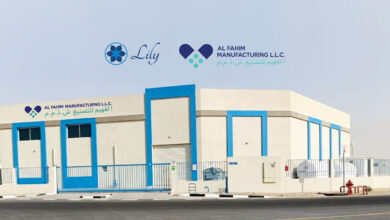Lateral tilt makes a difference
Jitka Stranska about the most distinguished feature of the LINET brand

Simple and brilliant. That was the idea of the young engineers at LINET, who changed the world of hospital beds and thus nursing. The lateral tilt, first used in the ICU environment, quickly found its way into everyday nursing routines. Details and interesting facts were provided by Jitka Stranska, Managing Director of LINET Middle East and Africa.
How can the hospital bed affect patient care?
Quite fundamentally. Today’s hospital beds are a functional system that allows patients to recover safely and comfortably. It is an ergonomic and intuitive aid for nursing staff. Advancing digitalisation is also penetrating the hospital room, the scenery is changing, the technology is evolving, but the nurse-patient interaction remains. Here, the lateral tilt plays a key role in basal patient care, which it revolutionises, while providing additional benefits for the entire hospital room environments.
Why is the bed with lateral tilt so unique and helpful?
The design mechanism not only moves the bed surface up and down, but tilts the bed sideways. This controlled movement rotates the bed frame surface and allows the patient to rotate with it, literally turning them from the supine to the lateral position. It seems so simple as to be ingenious. Empirical measurement confirmed that the lateral tilt reduces the effort required when turning the patient by 67%. Less demanding patient positioning can be used in daily nursing activities, such as positioning patients with pressure injuries, hygiene, skincare, making the bed, or nursing.
Using beds with lateral tilt looks easy, but the condition of patients is highly individual. Can lateral tilt be used for everyone?
Nursing procedures are standardized, but of course always depend on the individual condition and situation. Our goal is to educate the treatment teams. We realize that today’s nurses are literally inundated with technology and devices and it is not easy to use all the potential available in this environment. Therefore, we strive to offer comprehensive training focused on the principles of moving and handling, i.e. performing activities correctly and experiencing these habits in daily routines. In a simple way, during our workshops, you will learn useful rules for higher ergonomics at work, which quite fundamentally reduce the effort and physical effort and are an effective prevention against back pain and injuries. We work with specific tasks of the daily nursing routine and everything is based on interactivity and rehearsal of specific situations.
You mentioned that lateral tilt can be used throughout the hospital stay. Are there other examples of usage?
So far, we have talked about routine hospitalizations on standard wards. Lateral tilt is used in the ICU setting as well. Programmed cycles, so-called automatic lateral therapies, allow continous support during mechanical pulmonary ventilation. So-called microshifting offers cycles of slight lateral rotations to support the effort to train the patient’s body to tolerate side-to-side movement. This is related to the degree of mobility of the patient. For the mobilization process, which is the goal of recovery, we recommend the AACN (American Association of Critical-Care Nurses) procedure involving lateral tilt in all 4 staging positions.
What is behind this mobilization procedure and it’s stages?
Immobilization is a common problem for many patients, especially in the intensive care unit. Therefore, we came up with the idea of early mobilization using LINET features, which is based on the concept of early mobilization introduced by the American Association of Critical Care Nurses. Our new Early Mobilization with LINET program takes ACCNA’s recommended practices and expands on them with unique LINET features such as automatic lateral therapy (ALT), microshifting and Mobi-Lift®.
All of these components support ICU activities and can enhance the safety of the entire early mobilization program in the ICU. Also, Early Mobilization with LINET is part of our training program that we provide to customers and those interested in new nursing practices. LINET Group is not only working on product development so that we can bring innovations that help nurses. But we’re also refining our education system to turn technological advances into everyday practice.
















